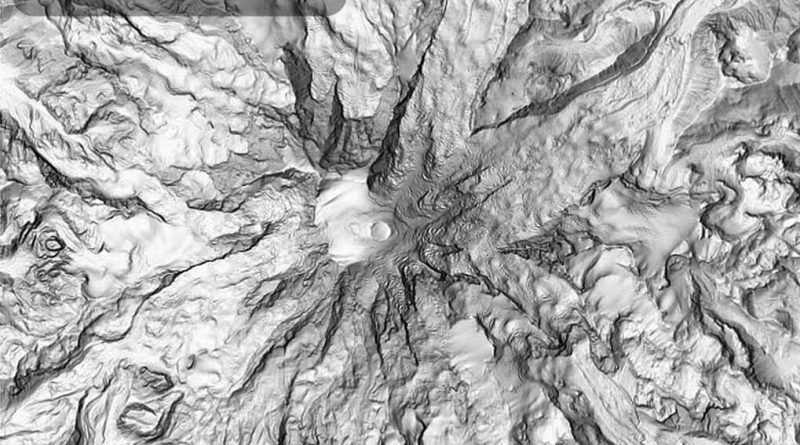Hillshade Lapakgis Enhancing Terrain Visualization and Analysis
When it comes to visualizing and analyzing terrain data, Hillshade Lapakgis plays a crucial role in understanding the topography and landscape features. In this article, we explore the concept of hillshade and how Lapakgis, a powerful GIS tool, can be utilized to generate accurate and visually appealing hillshade maps. Whether you’re a geospatial professional, an environmental scientist, an archaeologist, or a planner, understanding the applications of hillshade in GIS can greatly enhance your analysis and decision-making processes.
Understanding Hillshade Lapakgis
Hillshade Lapakgis is a technique used in cartography and geographic information systems (GIS) to create shaded relief maps that mimic the effect of light and shadow on the terrain. By simulating the illumination from a specific light source, hillshade maps provide a realistic representation of the terrain’s three-dimensional characteristics. The resulting maps highlight variations in elevation, slope, and aspect, allowing us to better understand the landforms and spatial patterns.
Hillshade Lapakgis maps find applications in various fields due to their ability to enhance terrain visualization and analysis. Let’s explore some of the key applications where hillshade plays a vital role:
The Importance of Lapakgis in Hillshade Analysis
Lapakgis, a feature-rich GIS platform, offers advanced tools and functionalities for generating accurate hillshade maps. Its seamless integration with various data sources and comprehensive set of analysis options make it an invaluable asset for hillshade analysis. With Hillshade Lapakgis, users can achieve high-quality outputs and gain deeper insights into the terrain characteristics.
How to Generate Hillshade Maps Using Lapakgis
To generate hillshade maps using Lapakgis, you can follow these simple steps:
- Import the terrain data into Lapakgis.
- Configure the light source parameters, such as azimuth and elevation angles.
- Apply the hillshade rendering algorithm.
- Customize the visualization settings to fine-tune the output.
- Export the Hillshade Lapakgis map in the desired format.
Tips for Effective Hillshade Visualization
To ensure visually appealing and informative hillshade maps, consider the following tips:
- Adjust the light source position to highlight specific features.
- Experiment with different color ramps to enhance the contrast.
- Overlay additional layers, such as land cover or hydrology, for context.
- Use transparency and blending modes to integrate hillshade with other data.
Enhancing Hillshade Accuracy with Lapakgis
Lapakgis offers advanced algorithms and tools to enhance the accuracy of hillshade analysis. With features like terrain correction, atmospheric correction, and noise reduction, Hillshade Lapakgis helps mitigate common challenges such as data artifacts and inconsistent lighting conditions. By leveraging these capabilities, users can generate more reliable and precise hillshade maps.
Terrain modeling plays a crucial role in various fields such as environmental assessments, archaeology, urban planning, and outdoor recreation planning. One of the key components of terrain modeling is hillshade analysis. In this article, we will explore the significance of hillshade analysis, its applications in different domains, and the challenges associated with it.
Hillshade Lapakgis and Landscape Analysis
Hillshade Lapakgis refers to the visual representation of terrain, taking into account the impact of light and shadow. It provides a realistic depiction of the terrain’s three-dimensional characteristics. Hillshade analysis is widely used to enhance terrain visualization and gain insights into the topographic features of a landscape. By simulating the effects of sunlight on a digital elevation model (DEM), hillshade analysis creates shaded relief maps that offer a comprehensive understanding of the terrain.
In landscape analysis, hillshade plays a crucial role in interpreting and assessing the terrain’s characteristics. By visualizing the interplay between light and shadow, hillshade analysis highlights variations in elevation, slope, and aspect. This information is invaluable for studying landforms, identifying potential hazards, and planning land use. By incorporating hillshade into landscape analysis, researchers and professionals can make informed decisions based on a more accurate representation of the terrain.
Hillshade in Environmental Assessments
Environmental assessments often require a thorough understanding of the terrain’s characteristics. Hillshade Lapakgis analysis provides valuable insights for assessing environmental factors such as solar radiation, water flow patterns, and vegetation distribution. By incorporating hillshade into environmental assessments, experts can identify areas prone to erosion, assess the impact of infrastructure projects on the landscape, and develop strategies for sustainable land management.
In the field of archaeology, hillshade analysis has proven to be a valuable tool for uncovering hidden features and understanding the topographic context of archaeological sites. By analyzing hillshade maps, archaeologists can identify subtle variations in the terrain that may indicate the presence of buried structures or ancient pathways. Hillshade analysis helps archaeologists create accurate site maps, plan excavation strategies, and gain insights into how past civilizations interacted with the landscape.
Hillshade for Outdoor Recreation Planning
Outdoor recreation planning involves the careful consideration of various factors to design and manage outdoor spaces effectively. One critical aspect of this planning process is the analysis of the terrain, which helps in understanding the physical characteristics of the area. One valuable tool in terrain analysis is hillshade, which provides a visual representation of the land’s surface based on its elevation data.
Hillshade is a technique used to create shaded relief maps by simulating the effects of sunlight on the terrain. It utilizes elevation data to calculate the angle of incidence and the direction of light to create shadows and highlights on the landscape. By incorporating Hillshade Lapakgis in outdoor recreation planning, planners can gain valuable insights into the terrain and make informed decisions.
When utilizing hillshade in outdoor recreation planning, it offers several benefits. Firstly, it enhances the visual representation of the terrain, allowing planners to understand the landforms and topography more intuitively. By examining the shades and shadows, they can identify areas of high and low relief, such as mountains, valleys, ridges, and slopes. This information aids in determining suitable locations for various recreational activities, such as hiking trails, camping grounds, and picnic areas.
Secondly, hillshade helps in assessing sunlight and shade patterns across the landscape. By analyzing the shadows cast by different landforms and the exposure to sunlight, planners can determine areas that receive more or less sunlight during different times of the day and throughout the seasons. This knowledge is crucial for designing outdoor spaces that offer optimal comfort and usability for recreational activities.
For instance, hillshade analysis can help identify shaded areas that provide relief from the sun’s intensity, making them suitable for activities like resting or picnicking during hot summer days. Conversely, it can also highlight areas that receive ample sunlight, making them ideal for activities like sunbathing or growing specific plants in botanical gardens.
Several outdoor recreation planning projects have successfully utilized Hillshade Lapakgis to enhance their decision-making process. For example, in the development of a national park, hillshade analysis can help identify areas with visually appealing landscapes, significant elevation changes, or unique landforms that can attract visitors. By leveraging this information, planners can create routes and trails that provide visitors with awe-inspiring views and enjoyable recreational experiences.



